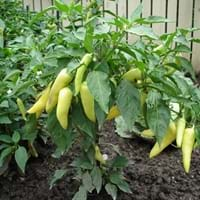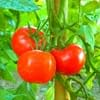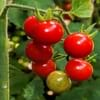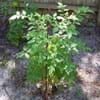Life Span
Annual
Perennial
Origin
Mexico, Central America, South America
Africa
Types
Sweet Banana Pepper, Banana Bill Hybrid Pepper, Hot Banana Pepper, Inferno Hot Banana Hybrid Pepper
Bigleaf hydrangea, Hortensia, Smooth hydrangea, Oakleaf hydrangea, Annabelle
Number of Varieties
Not Available
Habitat
Warmer regions
Forest edges, Hillside, Woods
USDA Hardiness Zone
9-11
Not Available
AHS Heat Zone
12-1
Not Available
Sunset Zone
A1, A2, A3, H1, H2, 1a, 1b, 2a, 2b, 3a, 3b, 4, 5, 6, 7, 8, 9, 10, 11, 12, 13, 14, 15, 16, 17, 18, 19, 20, 21, 22, 23, 24
21,22
Habit
Upright/Erect
Vining/Climbing
Flower Color
White, Ivory
Lavender
Flower Color Modifier
Bicolor
Bicolor
Fruit Color
Light Yellow, Lemon yellow, Yellow green
Yellow, Green, Purple
Leaf Color in Spring
Green, Light Green
Green
Leaf Color in Summer
Dark Green
Green
Leaf Color in Fall
Dark Green, Black
Green
Leaf Color in Winter
Green
Green, Purple
Leaf Shape
Ovate
Oblovate
Plant Season
Spring, Summer, Fall
Spring, Summer, Fall, Winter
Sunlight
Full Sun
Full Sun, Partial Sun
Type of Soil
Loam
Loam, Sand
The pH of Soil
Acidic, Neutral
Acidic, Neutral, Alkaline
Soil Drainage
Well drained
Well drained
Bloom Time
Spring, Summer, Fall, Indeterminate
Indeterminate
Tolerances
Drought
Drought
Where to Plant?
Container, Ground, Pot
Container, Ground
How to Plant?
Seedlings, Stem Planting
Seedlings, Stem Planting
Plant Maintenance
Medium
Medium
Watering Requirements
Over-head watering
Not Available
In Summer
Lots of watering
Average Water
In Spring
Moderate
Moderate
In Winter
Average Water
Average Water
Soil pH
Acidic, Neutral
Acidic, Neutral, Alkaline
Soil Type
Loam
Loam, Sand
Soil Drainage Capacity
Well drained
Well drained
Sun Exposure
Full Sun
Full Sun, Partial Sun
Pruning
Prune after harvesting, Prune in late winter, Prune lower leaves
Remove damaged leaves, Remove dead branches, Remove dead leaves
Fertilizers
All-Purpose Liquid Fertilizer
All-Purpose Liquid Fertilizer
Pests and Diseases
Red blotch
Red blotch
Plant Tolerance
Drought
Drought
Flowers
Insignificant
Insignificant
Flower Petal Number
Single
Single
Foliage Texture
Medium
Coarse
Foliage Sheen
Glossy
Matte
Attracts
Bees
Bees, Flies
Allergy
breathing problems, inflammation in lips, Runny nose, sneezing
Chest tightness, Diarrhea, Dizziness, Nausea, Vomiting
Aesthetic Uses
Not Used For Aesthetic Purpose
Not Available
Beauty Benefits
Not Available
Not Available
Edible Uses
Yes
Not Available
Environmental Uses
Air purification
Air purification
Medicinal Uses
Digestive disorders, Heart problems, High blood pressure, Inflammation
Fever, Kidney problems, Urinary tract problems
Part of Plant Used
Fruits
Flowers, Root
Other Uses
Not Available
Not Available
Used As Indoor Plant
No
Not Available
Used As Outdoor Plant
Yes
Yes
Garden Design
Container, Edible, Herb / Vegetable, Tropical
Herb / Vegetable, Tropical, Vine
Botanical Name
CAPSICUM annuum 'Park's Sweet Banana Whopper'
VIGNA unguiculata ssp. sesquipedalis
Common Name
Banana Pepper, Park's Sweet Banana Whopper Pepper
Asparagus Bean, Yardlong Bean
In Hindi
केले मिर्च
Hydrangea
In German
Banana Pfeffer
Hortensie
In French
Banana Pepper
Hortensia
In Spanish
banano Pimienta
Hortensia
In Greek
Πιπεριά Μπανάνα
υδραγεία
In Portuguese
Banana pimenta
Hortênsia
In Polish
Banana Pepper
Hortensja
In Latin
Musa sapientum fixa Pepper
Hibiscus
Phylum
Not Available
Not Available
Class
Not Available
Not Available
Order
Solanales
Not Available
Family
Solanaceae
Fabaceae
Genus
Peppers
Not Available
Clade
Not Applicable
Not Available
Tribe
Not Available
Not Available
Subfamily
Not Available
Not Available
Number of Species
Not Available
Not Available
Properties of Banana Pepper and Yardlong Bean
Wondering what are the properties of Banana Pepper and Yardlong Bean? We provide you with everything About Banana Pepper and Yardlong Bean. Banana Pepper doesn't have thorns and Yardlong Bean doesn't have thorns. Also Banana Pepper does not have fragrant flowers. Banana Pepper has allergic reactions like breathing problems, inflammation in lips, Runny nose and sneezing and Yardlong Bean has allergic reactions like breathing problems, inflammation in lips, Runny nose and sneezing. Compare all the properties and characteristics of these two plants. Find out which of these plant can be used as indoor plant. If you are interested to decorate your house and garden, find out aesthetic uses, compare them and select the plant which will beautify your surrounding. Along with beautification, try comparing medicinal and edible uses of Banana Pepper and Yardlong Bean and you can choose the plant having best and most benefits.
Season and Care of Banana Pepper and Yardlong Bean
Season and care of Banana Pepper and Yardlong Bean is important to know. While considering everything about Banana Pepper and Yardlong Bean Care, growing season is an essential factor. Banana Pepper season is Spring, Summer and Fall and Yardlong Bean season is Spring, Summer and Fall. The type of soil for Banana Pepper is Loam and for Yardlong Bean is Loam, Sand while the PH of soil for Banana Pepper is Acidic, Neutral and for Yardlong Bean is Acidic, Neutral, Alkaline.
Banana Pepper and Yardlong Bean Physical Information
Banana Pepper and Yardlong Bean physical information is very important for comparison. Banana Pepper height is 55.90 cm and width 45.70 cm whereas Yardlong Bean height is 18.00 cm and width 10.50 cm. The color specification of Banana Pepper and Yardlong Bean are as follows:
Banana Pepper flower color: White and Ivory
Banana Pepper leaf color: Green, Light Green
Yardlong Bean flower color: Lavender
- Yardlong Bean leaf color: Green
Care of Banana Pepper and Yardlong Bean
Care of Banana Pepper and Yardlong Bean include pruning, fertilizers, watering etc. Banana Pepper pruning is done Prune after harvesting, Prune in late winter and Prune lower leaves and Yardlong Bean pruning is done Remove damaged leaves, Remove dead branches and Remove dead leaves. In summer Banana Pepper needs Lots of watering and in winter, it needs Average Water. Whereas, in summer Yardlong Bean needs Average Water and in winter, it needs Average Water.





